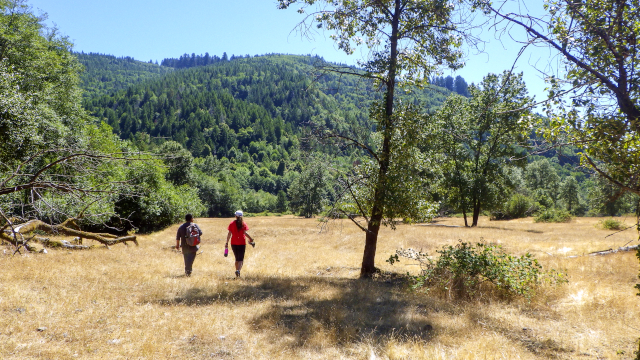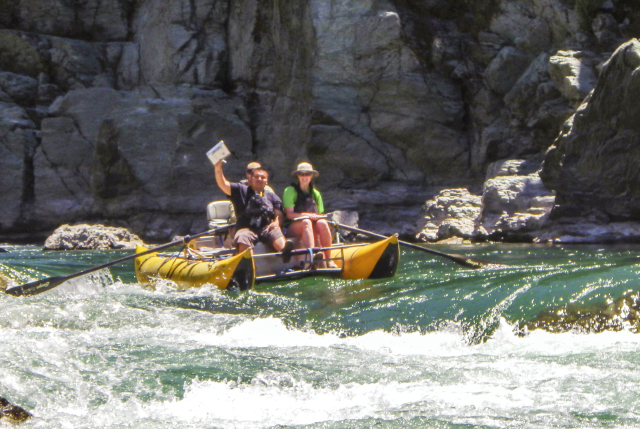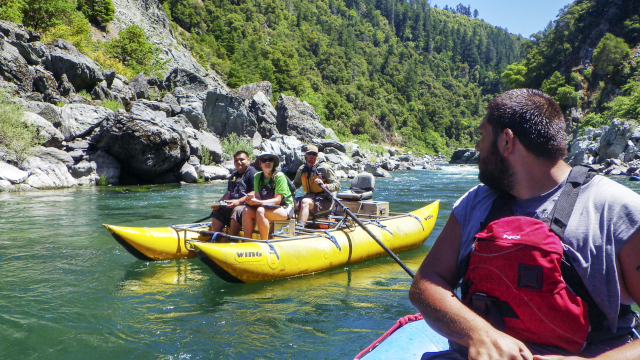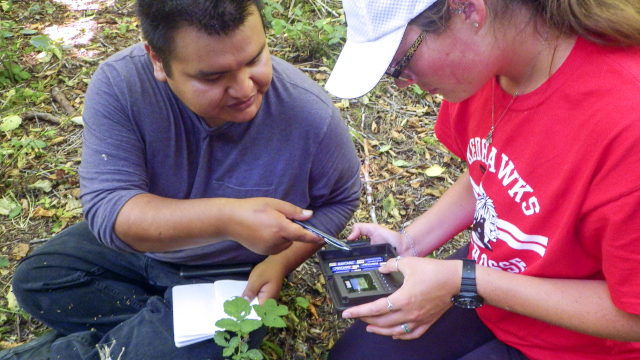
The students are members of HSU’s Rroulou’sik program, a Research Experience for Undergraduates (REU) program funded by the National Science Foundation. Now in its third and final year, Rroulou’sik, which is Wiyot for “rising up”, connects undergraduates from all over the U.S. to research mentors with local tribal partners and HSU faculty for research projects. The name of the program is intended to acknowledge the Wiyot people, whose ancestral lands HSU now sits upon.
Two students, Matthew Marshall and Dylan Neely, are HSU students. Wiyaka Previte attends College of the Redwoods.

While there are hundreds of REU programs around the U.S., HSU’s is unique in that it’s designed specifically for students interested in research experience in the science and management of natural resources on tribal lands and in collaboration with tribal partners.
“The deepest learning is achieved by students with a personal connection to tribal resources, and all our students have been American Indian, Native Alaskan, and Native Hawaiian students,” says Rroulou’sik Program Director and HSU Professor Matt Johnson.
Seafha Ramos, Rroulou’sik program coordinator and Department of Wildlife research associate, says students have said the program was a positive experience. One student told her and Johnson that their mentor not only guided them through the scientific process, but also through some of the complex navigational and identity issues facing Native students as they pursue higher education.
The the culmination of the summer-long program was an Aug. 9 symposium, during which the students’ gave conference-style oral presentations. (See a list of research topics and schedule below.)
It’s an opportunity for students to further develop their presentation skills and share their findings with campus, tribal representatives, and the community. Several students in this year’s cohort have already registered to share their work at the national American Indians in Science and Engineering conference.

Presentations
Jade Little (Oglala Lakota)
Pelagic cormorant nesting success and oceanic conditions in Northern California
Zane Ketchen (Yakama)
Basking habitat selection of Western pond turtles on the Klamath and Trinity Rivers
Jade Haumann (Seneca)
Comparison of the abundance, distribution and habitat use of basking Western pond turtles on the Klamath and Trinity Rivers
Matthew Marshall (Hupa)
Using scat detection, vegetation and landscape characteristics, and habitat modeling to identify potential Roosevelt elk habitat on Yurok ancestral lands
Nicholas Chischilly (Diné)
Juvenile salmon and trout habitat use on the Klamath River
Dylan Neely (Winnemem Wintu)
Using eDNA in water samples to determine the effectiveness of brook trout removal from high alpine lakes in the Trinity Alps Wilderness, California
Donald Moore (Yurok)
A comparison of two different aquaponic systems and a raised bed for pak choi and romaine lettuce production
Elizabeth Williams (Yurok)
Macroinvertebrate drift and Chinook salmon diet during a pulse release in the Trinity River
Ellen Sanders-Raigosa (Paskenta Band of Nomlaki Indians)
Strategies for supporting and empowering Karuk tribal youth in natural resources restoration and food security projects
Wiyaka Previte (Karuk)
Culturally Significant Plants to the Karuk Tribe and the Effects of Wildland Fire
Collaborators
HSU Native American Center for Academic Excellence
HSU INRSEP and Diversity in STEM
Karuk Tribe
Yurok Tribe
Brooks Estes
Sarah Schooler

Note: This story has been modified and was first published on Aug. 6, 2018.